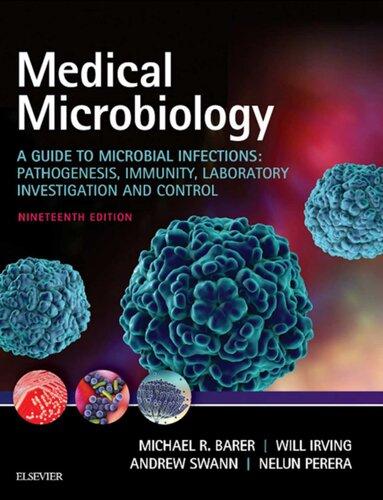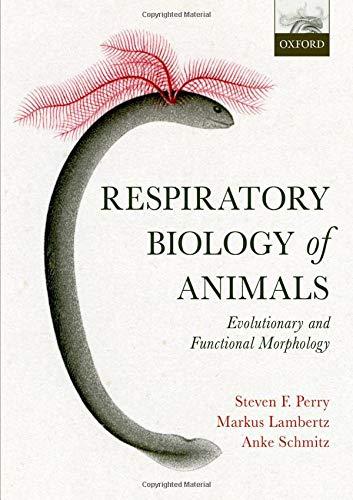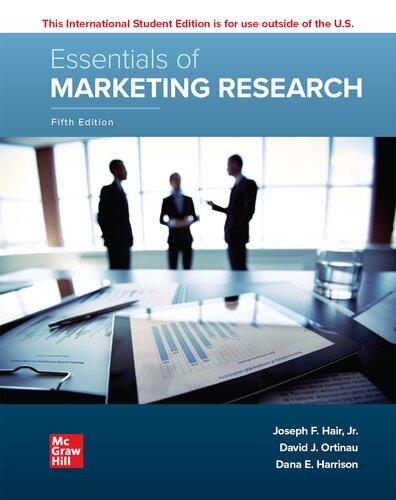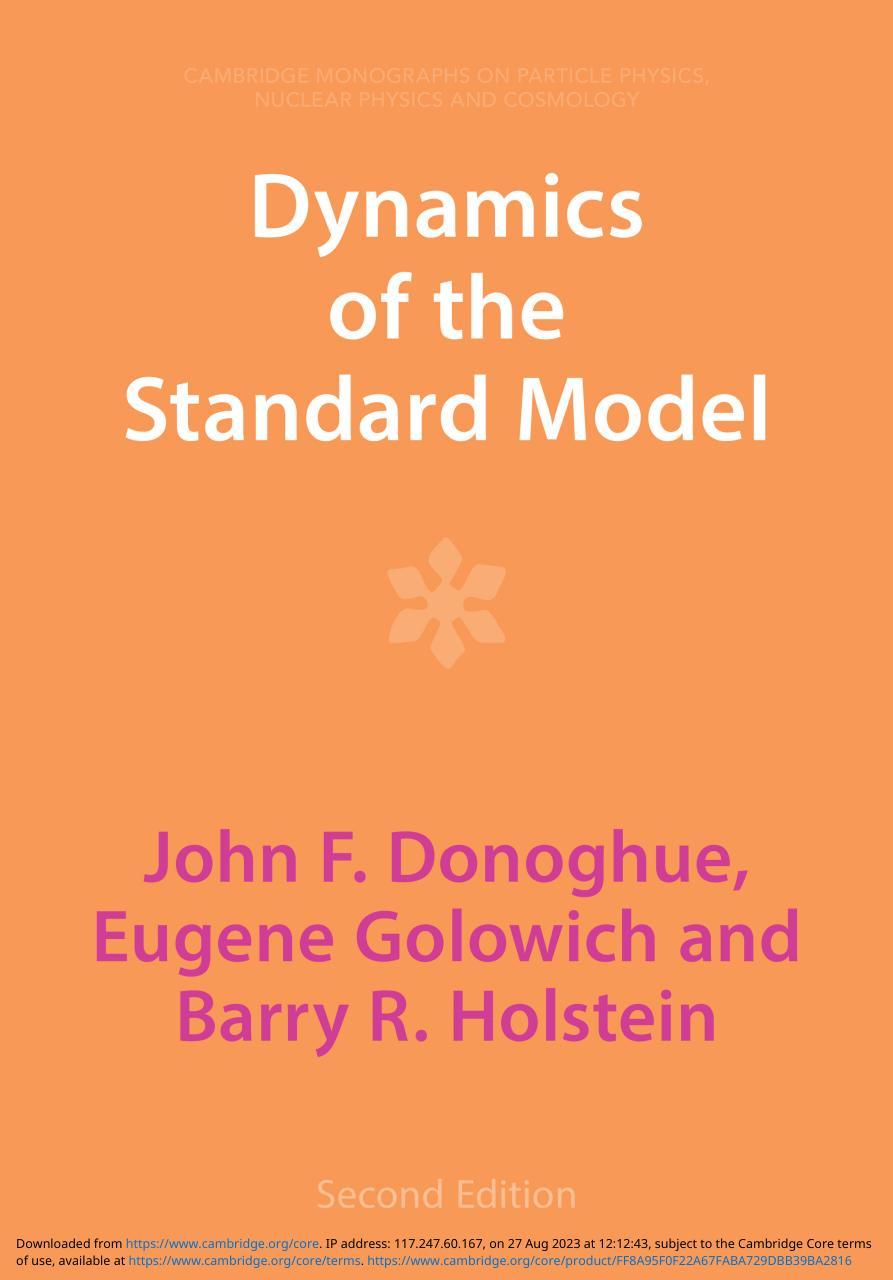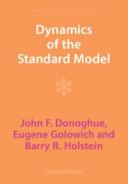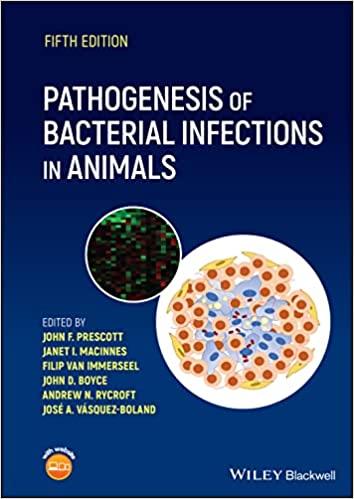PathogenesisofBacterialInfectionsinAnimals
Editedby
JohnF.Prescott
UniversityofGuelph,Guelph,Canada
JanetI.MacInnes UniversityofGuelph,Guelph,Canada
FilipVanImmerseel
GhentUniversity,Merelbeke,Belgium
JohnD.Boyce MonashUniversity,Clayton,Australia
AndrewN.Rycroft UniversityofLondon,RoyalVeterinaryCollege,Hertfordshire,UK
JoséA.Vázquez-Boland
MicrobialPathogenesisGroup,Edinburgh,UK
FifthEdition
Thisfiftheditionfirstpublished2023 ©2023JohnWiley&Sons,Inc.
Allrightsreserved.Nopartofthispublicationmaybereproduced,storedinaretrievalsystem,ortransmitted,inany formorbyanymeans,electronic,mechanical,photocopying,recordingorotherwise,exceptaspermittedbylaw. Adviceonhowtoobtainpermissiontoreusematerialfromthistitleisavailableat http://www.wiley.com/go/permissions.
TherightofJohnF.Prescott,JanetI.MacInnes,FilipVanImmerseel,JohnD.Boyce,AndrewN.Rycroft,andJosé A.Vázquez-Bolandtobeidentifiedastheauthorsoftheeditorialmaterialinthisworkhasbeenassertedin accordancewithlaw.
RegisteredOffice
JohnWiley&Sons,Inc.,111RiverStreet,Hoboken,NJ07030,USA
EditorialOffice
111RiverStreet,Hoboken,NJ07030,USA
Fordetailsofourglobaleditorialoffices,customerservices,andmoreinformationaboutWileyproductsvisitusat www.wiley.com.
Wileyalsopublishesitsbooksinavarietyofelectronicformatsandbyprint-on-demand.Somecontentthatappears instandardprintversionsofthisbookmaynotbeavailableinotherformats.
LimitofLiability/DisclaimerofWarranty
Thecontentsofthisworkareintendedtofurthergeneralscientificresearch,understanding,anddiscussiononly andarenotintendedandshouldnotberelieduponasrecommendingorpromotingscientificmethod,diagnosis,or treatmentbyphysiciansforanyparticularpatient.Inviewofongoingresearch,equipmentmodifications,changes ingovernmentalregulations,andtheconstantflowofinformationrelatingtotheuseofmedicines,equipment,and devices,thereaderisurgedtoreviewandevaluatetheinformationprovidedinthepackageinsertorinstructionsfor eachmedicine,equipment,ordevicefor,amongotherthings,anychangesintheinstructionsorindicationofusage andforaddedwarningsandprecautions.Whilethepublisherandauthorshaveusedtheirbesteffortsinpreparing thiswork,theymakenorepresentationsorwarrantieswithrespecttotheaccuracyorcompletenessofthecontents ofthisworkandspecificallydisclaimallwarranties,includingwithoutlimitationanyimpliedwarrantiesof merchantabilityorfitnessforaparticularpurpose.Nowarrantymaybecreatedorextendedbysalesrepresentatives, writtensalesmaterialsorpromotionalstatementsforthiswork.Thefactthatanorganization,website,orproductis referredtointhisworkasacitationand/orpotentialsourceoffurtherinformationdoesnotmeanthatthepublisher andauthorsendorsetheinformationorservicestheorganization,website,orproductmayprovideor recommendationsitmaymake.Thisworkissoldwiththeunderstandingthatthepublisherisnotengagedin renderingprofessionalservices.Theadviceandstrategiescontainedhereinmaynotbesuitableforyoursituation. Youshouldconsultwithaspecialistwhereappropriate.Further,readersshouldbeawarethatwebsiteslistedinthis workmayhavechangedordisappearedbetweenwhenthisworkwaswrittenandwhenitisread.Neitherthe publishernorauthorsshallbeliableforanylossofprofitoranyothercommercialdamages,includingbutnot limitedtospecial,incidental,consequential,orotherdamages.
LibraryofCongressCataloging-in-PublicationDataappliedfor [HBISBN:9781119754794]
CoverDesign:Wiley
CoverImages:©Wikimedia,CourtesyofKarrenPlain
Setin9.5/12.5ptSTIXTwoTextbyStraive,Chennai,India
Contents
Preface xv
ListofContributors xvii
AbouttheCompanionWebsite xxv
1ThemesinBacterialPathogenesis 1
JohnF.Prescott
Introduction 1
TheBasicElementsofBacterialPathogenesis 1
ConceptsofBacterialVirulenceareBeingRefined 5
Host–PathogenCommunicationsareCritical 9 PathogenesisinthePost-GenomicEra 11
GapsinKnowledgeandAnticipatedDirections 13
References 13
2EvolutionofBacterialPathogens 15
PatrickBoerlin
WhatarePathogensandHowDoTheyEmerge? 15
BacterialFitnessandVirulence 17
SourcesofGeneticDiversity,PopulationStructure,andGenomePlasticity 18 PathogenicityIslands 20
BacteriophagesandTheirRoleinPathogenEvolutionandVirulence 22 ExamplesofVirulenceEvolution 23
GapsinKnowledgeandAnticipatedDirections 27
References 28
3UnderstandingPathogenesisThroughPathogenomicsandBioinformatics 32
GregorioIraolaandJohnD.Boyce
Introduction 32
HowMutationsGenerateBacterialDiversity 34
GenomeSequencingTechnologies 36
GenomeAssembly 38
GenePredictionandAnnotation 39
DefiningProkaryoticSpeciesfromGenomes 41
ThePangenomeConcept,Reconstruction,andComparativeAnalyses 41 PhylogenomicsandGenome-WideAssociationStudies 42
FunctionalGenomicsforUnderstandingHost–PathogenInteractions 44 ReverseVaccinology 48
GapsinKnowledgeandAnticipatedDirections 51
References 52
4ExperimentalApproachestoUnderstandingPathogenesis 57
FrancescaL.ShortandJanetI.MacInnes
Introduction 57
TestingKoch’sPostulates 57
VirulenceFactorsandMainStepsinPathogenesis 58
MolecularKoch’sPostulates 60
RefiningAnimalUsage 60
ExperimentalApproachesforVirulenceFactorDiscoveryandValidation 62
ApproachesforVirulenceFactorDiscovery 63
GeneDisruptionApproachesforVirulenceFactorDiscovery 71
BringingItAllTogether:ValidationandFurtherCharacterizationofVirulence Factors 73
TwoStoriesofVirulenceFactorDiscoveryandCharacterization: Pasteurellamultocida Capsule,and Mycoplasmabovis Adhesins 74
GapsinKnowledgeandAnticipatedDirections 75 References 76
5SubversionoftheImmuneResponsebyBacterialPathogens 79
DouglasC.Hodgins,RaveendraR.Kulkarni,andPatriciaE.Shewen
Introduction 79
SubversionofInnateResponses 80
SubversionofAdaptiveImmunity 85
ManipulationofCellFate 88
Non-CodingRNAandHost-PathogenInteractions 91
EpigeneticandGeneticModulation 92
GapsinKnowledgeandAnticipatedDirections 94 References 94
6ChinksintheArmor 99
AllisonC.Leonard,CelineStoica,andGeorginaCox
Introduction 99
VirulenceFactors:Pathogenesis-BasedTargetstoCombatBacterialPathogens 99
TargetingBacterialHostCellAdhesionandBiofilmFormation 100
QuorumSensingInhibition 104
InterferingwithTwo-ComponentRegulatorySystems 105
InhibitingBacterialMotility 106
ToxinNeutralization 107
InhibitorsofBacterialSecretionSystems 107
TargetingNutrientAcquisition:StarvingthePathogen 110
AntivirulencePhageTherapy 111
BacterialDrugEffluxPumpsasPathogenesis-BasedAntibacterialTargets 112
GapsinKnowledgeandAnticipatedDirections 112 References 113
7 Escherichiacoli 117
JohnM.FairbrotherandCarltonL.Gyles
Introduction 117
Pathotypesof E.coli andAssociatedDiseaseandPathologicalChanges inAnimals 119
VirulenceFactorsofPathogenic E.coli126
PathogenesisofEnterotoxigenic E.coli141
PathogenesisofEnteropathogenic E.coli Disease 144
PathogenesisofShigaToxin-Producing E.coli Disease 146
PathogenesisofExtraintestinalPathogenic E.coli Infections 149
GapsinKnowledgeandAnticipatedDirections 156
References 157
8 Salmonella 162
PaulA.Barrow,MichaelA.Jones,KateC.Mellor,andNickR.Thomson
Introduction 162
CharacteristicsoftheOrganism 162
TypesofDiseaseandPathologicChanges 167
Salmonella InfectionsinDifferentMajorFarmedAnimalSpecies 169
VirulenceFactors 174
Pathogenesis 179
ImmunitytoInfectionanditsManipulationby Salmonella186
AntimicrobialResistance 190
GapsinKnowledgeandAnticipatedDirections 191
References 192
9 Yersinia 200
Anne-SophieLeGuernandJavierPizarro-Cerdá
Introduction 200
CharacteristicsoftheOrganism 200
PathogenicSpecies 200
Taxonomy 201
MajorVirulenceFactorsoftheHighlyPathogenic Yersinia203
Yersiniapestis205
Yersiniapseudotuberculosis and Yersiniaenterocolitica209
Yersiniaruckeri213
Yersiniaentomophaga213
Controlof Yersinia Infections 214
GapsinKnowledgeandAnticipatedDirections 214
References 215
10 Pasteurella 221
MarinaHarper,ThomasR.Smallman,andJohnD.Boyce
Introduction 221
CharacteristicsoftheOrganism 221
SourceofInfection:Ecology,Evolution,andEpidemiology 223
TypesofDiseaseandPathologicChanges 223
VirulenceFactorsandPathogenomics 225
RegulationofVirulence 233
Pathogenesis 235
Immunity 236
Control 238
GapsinKnowledgeandAnticipatedDirections 239
References 239
11 Mannheimia and Bibersteinia 244
JeffL.CaswellandCharlesJ.Czuprynski
Introduction 244
CharacteristicsoftheOrganism 244
PathogenicSpecies 245
12
SourceofInfection:Ecology,Evolution,andEpidemiology 245
TypesofDiseaseandPathologicChanges 247
VirulenceFactorsandPathogenomics 249
RegulationofVirulence 250
Pathogenesis 251
Immunity 254
Control 254
GapsinKnowledgeandAnticipatedDirections 255
References 256
Actinobacillus 262
JanineT.Bossé,AdinaR.Bujold,andLuLi
Introduction 262
Actinobacilluspleuropneumoniae262
Actinobacilluslignieresii277
Actinobacillusequuli278
Actinobacillussuis279
GapsinKnowledgeandFutureDirections 281
References 283
13OtherPasteurellaceae: Avibacterium, Bibersteinia, Gallibacterium, Glaesserella,and Histophilus 290
AndersM.Bojesen,VirginiaAragon,andPatJ.Blackall
Introduction 290
Avibacterium290
Bibersteinia292
Gallibacterium295
Glaesserellaparasuis301
Histophilus309
References 311
14
Pseudomonas 318
ErinL.Westman,VéroniqueL.Taylor,andJosephS.Lam
Introduction 318
CharacteristicsoftheOrganism 318
PathogenicSpecies 319
SourcesofInfection:Ecology,Evolution,andEpidemiology 320
TypesofDiseaseandPathologicChanges 320
VirulenceFactorsandPathogenomics 321
Pathogenesis 328
Immunity 330
Control,Prevention,andTreatment 331
GapsinKnowledgeandAnticipatedDirections 335
References 337
15Moraxella 344
JohnA.Angelos
Introduction 344
InfectiousBovineKeratoconjunctivitis 344
Pathogenesisof Moraxellabovis Infection 346
Immunity 352
Control 354
GapsinKnowledgeandFutureDirections 354
References 355
16 Brucella 361
ClaytonC.Caswell,AngelaArenas-Gamboa,andJeffT.Foster
Introduction 361
CharacteristicsoftheOrganism 361
PathogenicSpecies 362
SourceofInfection:Ecology,Evolution,andEpidemiology 362
TypesofDiseaseandPathologicChanges 363
VirulenceFactors 366
RegulationofVirulence 368
Pathogenomics 369
Pathogenesis 370
Immunity 370 Control 371
GapsinKnowledgeandAnticipatedDirections 371
References 372
17
Bordetella 376
ColleenJ.Sedney,TracyL.Nicholson,andEricT.Harvill
Introduction 376
CharacteristicsoftheOrganisms 376
PathogenicSpecies 377
SourceofInfection:EcologyandEpidemiology 379
TypesofDiseaseandPathologicChanges 380
VirulenceFactors 380
RegulationofVirulence 385 Pathogenesis 385
Immunity 385 Control 387
GapsinKnowledgeandAnticipatedDirections 389
References 389
18 Campylobacter 393
ZuoweiWu,OrhanSahin,andQijingZhang
Introduction 393
Diseases,Etiology,andEcology 394
ClinicalObservationsandPathologicChanges 397
PathogenesisandVirulenceFactors 398
PathogenomicsandEvolution 402
Immunity 405 Control 406
GapsinKnowledgeandFutureDirections 407
References 408
19 Helicobacter 413
ChloëDeWitte,HelenaBerlamont,andFreddyHaesebrouck
Introduction 413
GastricHelicobacters 413
EnterohepaticHelicobacters 425
GapsinKnowledgeandFutureDirections 426
References 427
20 ChlamydiaandCoxiella 433
MartinaJelocnik,WilhelminaM.Huston,andHayleyJ.Newton
Introduction 433
Chlamydiae 433
CharacteristicsoftheOrganism 433
SourceofInfection:Ecology,EvolutionandEpidemiology 436
TypesofDiseaseandPathologicChanges 436
Pathogenesis 442
ImmunityandControl 442
GapsinKnowledgeandAnticipatedDirections 443
Coxiellaburnetii443
CharacteristicsoftheOrganism 444
SourceofInfection:Ecology,EvolutionandEpidemiology 445
TypesofDiseaseandPathologicChanges 445
VirulenceFactorsandPathogenomics 447
ImmunityandControl 448
GapsinKnowledgeandAnticipatedDirections 449
References 449
21Rickettsiales 456
JereW.McBride,RomanR.Ganta,andDavidH.Walker
Introduction 456
FamilyAnaplasmataceae 457
Anaplasma Species 457
Ehrlichia Species 463
Neorickettsia Species 474
FamilyRickettsiaceae 476
Rickettsia Species 476
References 480
22 Lawsoniaintracellularis 486
RobertoM.C.Guedes,FabioA.Vannucci,andConnieJ.Gebhart
Introduction 486
CharacteristicsoftheOrganism 486
SourcesofInfection:EcologyandEpidemiology 489
TypesofDiseaseandPathologicChanges 490
VirulenceFactorsandPathogenomics 491
Pathogenesis 492
Immunity 496
Control 497
GapsinKnowledgeandAnticipatedDirections 497
References 498
23 Leptospira 502
CyrilleGoarant,BenAdler,andAlejandrodelaPeñaMoctezuma
Introduction 502
CharacteristicsoftheOrganism 502
Leptospira Species 505
SourceofInfection:Ecology,Evolution,andEpidemiology 505
ClinicalPresentationandSigns 511
VirulenceFactorsandPathogenomics 511
RegulationofVirulence 514
Pathogenesis 514
Immunity 516
Control 518
GapsinKnowledgeandAnticipatedDirections 518
References 519
24 Brachyspira 528
JosephE.RubinandJudithRohde
Introduction 528
CharacteristicsoftheOrganism 528
PathogenicSpeciesandDiseaseAssociations 529
SourceofInfection:Ecology,Evolution,andEpidemiology 530
VirulenceFactorsandPathogenomics 531
Pathogenesis 531
Immunity 537
Control 538
GapsinKnowledgeandAnticipatedDirections 538
References 539
25 Staphylococcus 543
AmyC.Pickering,AndreasF.Haag,JoséR.Penades,andJ.RossFitzgerald
Introduction 543
CharacteristicsoftheOrganism 543
PathogenicSpecies 544
Staphylococcusaureus InfectionsinCattle 546
Staphylococcusaureus InfectionsinPoultry 551
Staphylococcusaureus InfectionsinRabbits 553
Staphylococcushyicus InfectionsinPigs 554
Staphylococcuspseudintermedius InfectionsinDogs 556
GapsinKnowledgeandFutureDirections 559
References 560
26 Streptococcus 565
JohnF.Timoney
Introduction 565
CharacteristicsoftheOrganism 565
PathogenicSpecies 565
Streptococcusagalactiae567
Streptococcusdysgalactiae569
Streptococcusuberis570
Streptococcusequi571
Streptococcuszooepidemicus577
Streptococcuscanis579
Streptococcussuis580
GapsinKnowledgeandAnticipatedDirections 583
References 583
27 Bacillusanthracis 588
JoachimFrey
Introduction 588
CharacteristicsoftheOrganism:TaxonomyandPhylogeny 588
SourceandSpreadoftheInfection:Ecology,Evolution,andEpidemiology 591
TypesofDiseaseandPathologicChanges 592
VirulenceFactorsandPathogenomics 594
RegulationofVirulence 595
Pathogenesis 596
ImmunityandVaccines 598
ControlandPreventionofAnthrax 598
GapsinKnowledgeandAnticipatedDirections 600
References 601
28EntericClostridia 607
EvelienDierick,EvyGoossens,JohnF.Prescott,RichardDucatelle,andFilipVanImmerseel
Introduction 607
Clostridiumperfringens607
CharacteristicsoftheOrganism 607
PathogenicTypes 608
SourcesofInfections:Ecology,EvolutionandEpidemiology 608
TypesofDiseaseandPathologicChanges 611
VirulenceFactors 616
RegulationofVirulence 622
ThePathogenesisof Clostridiumperfringens EntericDisease 622
Control 625
GapsinKnowledgeandAnticipatedDirections 625
Clostridioidesdifficile626
CharacteristicsoftheOrganism 626
SourceofInfection:Ecology,EvolutionandEpidemiology 626
TypesofDiseaseandPathologicChanges 627
Disease 627
VirulenceFactorsandPathogenomics 627
RegulationofVirulence 628
Pathogenesis 629
Immunity 630
Control 630
GapsinKnowledgeandAnticipatedDirections 630
OtherEntericClostridia 630
References 631
29HistotoxicClostridia 635
AndrewN.Rycroft
Introduction 635
CharacteristicsoftheOrganisms 635
SourceofInfectionandBasicPathogenesis 636
PathogenicSpecies 636
Clostridiumsepticum (MalignantEdema/GasGangrene) 638
Clostridiumchauvoei (Blackleg) 639
Paeniclostridiumsordellii640
Clostridiumnovyi TypeB(BlackDisease/Bighead) 642
Clostridiumhaemolyticum643
Clostridiumperfringens644
Control 645
GapsinKnowledgeandFutureDirections 645
References 646
30NeurotoxicClostridia 648
MichelR.Popoff
Introduction 648
CharacteristicoftheOrganisms 648
Clostridiumbotulinum648
Clostridiumtetani650
SourcesofInfection:EcologyandEpidemiology 652
Diseases 656
Botulism 656
Tetanus 657
VirulenceFactors 658
Pathogenesis 659
Control 663
References 664
31Mycoplasmas 667
PollobK.Shil,NadeekaK.Wawegama,GlennF.Browning,AmirH.Noormohammadi,andMarc S.Marenda
Introduction 667
CharacteristicsoftheOrganisms 667
PathogenicSpecies 668
SourceofInfection:Ecology,Evolution,andEpidemiology 668
VirulenceFactorsandPathogenomics 670
RegulationofVirulence 674
TypesofDiseaseandPathologicChanges 674
Pathogenesis 680
Immunity 688
Control 690
GapsinKnowledgeandAnticipatedDirections 690
References 691
32 Corynebacterium, Arcanobacterium,and Trueperella 701
ThiagoD.Barral,RicardoW.Portela,NúbiaSeyffert,andRobertJ.Moore
Corynebacterium701
Corynebacteriumpseudotuberculosis701
BovinePyelonephritisCausedby Corynebacterium Species 706
OtherAnimalPathogenic Corynebacterium Species 706
Arcanobacterium707
Trueperella709
GapsinKnowledgeandFutureDirections 710
References 710
33 Rhodococcusequi 715
JoséA.Vázquez-Boland,MacarenaG.Sanz,andJohnF.Prescott
Introduction 715
CharacteristicsoftheOrganism 715
SourceofInfectionandEpidemiology 717
TypesofDiseaseandPathologicChanges 720
VirulenceFactors 721
Evolutionof Rhodococcusequi Virulence 723
Pathogenesis 724
Immunity 726
TreatmentandControl 728
Contents
GapsinKnowledgeandAnticipatedDirections 730
References 731
34 Mycobacterium 736
KarrenM.Plain,KarenStevenson,RichardJ.Whittington,andNathalieWinter
Introduction 736
CharacteristicsoftheOrganism 736
SourcesofInfection 738
SourceofInfection:EvolutionandEpidemiology 739
VirulenceFactorsandPathogenomics 740
RegulationofVirulence 742
TypesofDisease 743
Pathogenesis 744
AdaptiveImmunityandMycobacterialPathogenesis 748
Control 750
GapsinKnowledgeandAnticipatedDirections 750 References 752
35 Gram-Negative Anaerobes 757
JohnF.Prescott
Introduction 757
GeneralBacterialPathogenesisAspects 757
Fusobacterium759
Bacteroides763
Prevotella and Porphyromonas764
Dichelobacternodosus765
Treponema767
GapsinKnowledgeandAnticipatedDevelopments 768
References 768
Index 773
Preface
Thefiftheditionof PathogenesisofBacterial InfectionsinAnimals triestocapturethe manyfascinatingandrapiddevelopmentsin ourunderstandingofhowmajorbacterial pathogensofanimalscausedisease.Itisthe productoftheeffortsof87expertsfrom14 countries:Australia,Brazil,Belgium,Canada, China,France,Germany,Mexico,NewCaledonia,Spain,Switzerland,theUnitedKingdom, theUnitedStates,andUruguay.Wethank themall.
Althoughmolecularpathogenesisisamajor aspectinalmosteverychapter,theauthors havebeencarefultoplacepathogensintheir broadercontext.Asinthepreviouseditions, wehavepresentedthediseaseprocessat boththeherd/flockandcellular/molecular levels.Thedetailsvaryfromoneorganism toanother,partlybecausebacterialdiseases developunderwidelyvaryingcircumstances, andpartlybecausetheextentofknowledge variesconsiderably.
Sincethelastedition,wehaveadded introductorymaterialonpathogenesisand bioinformatics(Chapter3),onexperimental approachestounderstandingpathogenesis (Chapter4)aswellasonpathogenesis-based strategiestocombatingbacterialinfections (Chapter6).Toaccommodatetheexpandingimportancegenerasuchas Avibacterium, Glaesserella,and Gallibacterium,wehavean expandeddescriptionoftheseorganismsin Chapter13,OtherPasteurellaceae.Inthis fifthedition, Brachyspira and Helicobacter also gettheirownchapters(Chapters24and19,
respectively),andwehaveadded Coxiella to thechapteron Chlamydia (Chapter20).
Inadditiontothesenewchapters,amajor changeinthefiftheditionhasbeenafocuson thewealthofnewinformationthathasbeen generatedbytherecentgenomicsrevolution withitsapplicationtopathogenesisaswellas tounderstandingtheevolutionofpathogens. Wehavethereforeincluded“pathogenomics” and“evolution”withinnewsectionheadings inthepathogenchapters.Althoughpathogenesisisalwaysfullofsurprises,thelastsection inthepathogenchapters,“Gapsinknowledge andanticipateddirections,”providesaglimpse intowheretheexpertsthinktheresearchis heading.
Understandinghowbacterialpathogens causediseaseisinvariablychallengingand theirstudyofrequiresmultidimensionaland multidisciplinaryapproaches.Tohelpthe readergetarapidoverview,authorsofthe pathogenchaptershaveproducedfiguresthat integratethemajorelementsinpathogenesis. Wehavealsoaddedregulationofvirulence asanewsectionheading,sincethiscomplex topicisacriticalintegratingelement.There isadmittedlyalongwaytogobeforewehave awell-integratedunderstandingofbacterial pathogenesisofmanyorganisms,butwithat leastsomepathogens,ourunderstandinghas beenmuchimproved.
Thepasttwodecadeshaveseentheemergenceoftheantimicrobialresistancecrisisin bothhumanandveterinarymedicine,which demonstratestheextraordinaryabilityof
bacteriatoadapttodifferentpressures,often remarkablyrapidly.Thisadaptabilityisalso evidentinthemarkedlyenhancedvirulence seeninsomebacterialpathogensoffood animal,apparentlyinresponsetochangesin animalmanagement.
Oneinterestingemergingthemeinthisbook istheadaptationofwhatusedtoberegarded asrelativelybroadhost-rangepathogensto specificanimalspecies,suchthattheusually considerableknowledgeofthepathogenesis ofhumanbacterialpathogensmaynotbe immediatelyapplicabletothepathogenthat hasadaptedtoanimals.
Althoughwealllookbacktotheheroesof themicrobiologicalrevolution,personified byLouisPasteurandRobertKoch,andmany veterinarymicrobiologistsfromthatera,we areconvincedthatthegoldenageofmicrobiologyisthepresentandalsocontinuestolie ahead.Ifwecanunderstandthepathogenesis ofimportantveterinarypathogensatafundamentallevel,weshouldbeabletousethis understandingtodevelopnovelstrategiesfor prevention,treatment,andcontrolofserious pathogens.
Thisbookisbasedontheworkofhundreds ofresearchers,whoseideas,innovation,and researchskillshaveproducedthebodyof knowledgeonwhichwedraw.Theauthors havepresentedcaptivatingstoriesofbacterial pathogenesisbasedontheirownworkand thatoftheirscientificcolleagues.Oneofthe challengesinpreparingthebookwasthe
questionofadequateattributionofresearch findings.Whiletryingtoacknowledgekeycontributions,wehavehadtolimitthenumberof references,recognizingwithregretthatnotall researcherswhomadeimportantcontributions totheliteraturewillberecognized.
Theneweditorialteamowesagreatdebt ofthankstothepreviouseditorsofthisbook: CarltonL.Gyles,J.GlennSonger,andCharles (Chuck)O.Thoen.Mostofall,wewouldlike toacknowledgeCarltonGyles,whohadthe originalinspirationforthisbookandwho carriedmuchoftheloadinassemblingearliereditions.Carltonhasmadeinestimable contributionstothefieldofveterinarybacteriologyandthecontinuationofthisbook intoaneweditionisatributetohiswork. ThechapterbyJohnFairbrotherandCarlton Gyleson Escherichiacoli inthisbookisa masterpiece.
Finally,wethankourpublisherswhohave beenextremelyhelpfulintransformingthe writingsofsomanyindividualsintoabeautiful book.SpecialthanksgotoMerrylLeRoux, themanagingeditor;SusanEngelken,editorialprogramcoordinator;andEricaJudisch, executiveeditor.
JohnF.Prescott
JanetI.MacInnes
FilipVanImmerseel
JohnD.Boyce
AndrewN.Rycroft
JoséA.Vázquez-Boland
ListofContributors
BenAdler DepartmentofMicrobiology BiomedicineDiscoveryInstitute MonashUniversity Clayton,Victoria Australia
JohnA.Angelos DepartmentofMedicineandEpidemiology SchoolofVeterinaryMedicine UniversityofCalifornia Davis,CA USA
VirginiaAragon CentredeRecercaenSanitatAnimal CampusdelaUniversitatAutònomade Barcelona Bellaterra Spain
AngelaArenas-Gamboa CollegeofVeterinaryMedicine TexasA&MUniversity CollegeStation,TX USA
ThiagoD.Barral InstitutodeCiênciasdaSaúde UniversidadeFederaldaBahia Bahia
Brazil
PaulA.Barrow SchoolofVeterinaryMedicineandScience UniversityofSurrey Guildford UK
HelenaBerlamont GhentUniversity,FacultyofVeterinary Medicine DepartmentofPathology BacteriologyandAvianDiseases Merelbeke
Belgium
PatJ.Blackall QueenslandAllianceforAgricultureandFood Innovation UniversityofQueensland Brisbane,Queensland
Australia
PatrickBoerlin DepartmentofPathobiology UniversityofGuelph Guelph,Ontario Canada
AndersM.Bojesen UniversityofCopenhagen DepartmentofVeterinaryandAnimalSciences Frederiksberg
Denmark
xviii ListofContributors
JanineT.Bossé
SectionofPaediatricInfectiousDisease DepartmentofInfectiousDisease ImperialCollegeLondon UK
JohnD.Boyce BiomedicineDiscoveryInstitute InfectionandImmunityProgramand DepartmentofMicrobiology MonashUniversity Clayton,Victoria Australia
GlennF.Browning Asia-PacificCentreforAnimalHealth FacultyofVeterinaryandAgriculturalSciences UniversityofMelbourne Parkville,Victoria Australia
AdinaR.Bujold DepartmentofPathobiology UniversityofGuelph Guelph,Ontario Canada
ClaytonC.Caswell DepartmentofBiomedicalSciencesand Pathobiology CenterforOneHealthResearch VA-MDCollegeofVeterinaryMedicine VirginiaTech Blacksburg,VA USA
JeffL.Caswell DepartmentofPathobiology UniversityofGuelph Guelph,Ontario Canada
GeorginaCox DepartmentofMolecularandCellularBiology UniversityofGuelph Guelph,Ontario Canada
CharlesJ.Czuprynski
DepartmentofPathobiologicalSciences UniversityofWisconsin Madison,Wisconsin USA
AlejandrodelaPeña-Moctezuma
DepartamentodeMicrobiologíaeInmunología FacultaddeMedicinaVeterinariayZootecnia UniversidadNacionalAutónomadeMéxico Coyoacán Mexico
ChloëDeWitte
DepartmentofPathology,Bacteriologyand AvianDiseases
FacultyofVeterinaryMedicine GhentUniversity Merelbeke
Belgium
EvelienDierick
DepartmentofPathology,Bacteriologyand AvianDiseases
FacultyofVeterinaryMedicine GhentUniversity Merelbeke
Belgium
RichardDucatelle
DepartmentofPathology,Bacteriologyand AvianDiseases
FacultyofVeterinaryMedicine GhentUniversity Merelbeke
Belgium
JohnM.Fairbrother UniversitédeMontreal
Facultédemédecinevétérinaire
Départementdepathologieetmicrobiologie St.Hyacinthe,Quebec Canada
J.RossFitzgerald RoslinInstituteandEdinburghInfectious Diseases
UniversityofEdinburgh
Edinburgh UK
JeffT.Foster PathogenandMicrobiomeInstitute NorthernArizonaUniversity Flagstaff,AZ USA
JoachimFrey VetsuisseFaculty UniversitätBern Bern Switzerland
RomanR.Ganta DepartmentofDiagnostic Medicine/Pathobiology CollegeofVeterinaryMedicine KansasStateUniversity Manhattan,KS USA
ConnieJ.Gebhart VeterinaryDiagnosticLaboratory CollegeofVeterinaryMedicine UniversityofMinnesota St.Paul,MN USA
CyrilleGoarant InstitutPasteurdeNouvelle-Calédonie Noumea NewCaledonia
EvyGoossens DepartmentofPathology BacteriologyandAvianDiseases FacultyofVeterinaryMedicine GhentUniversity Merelbeke
Belgium
RobertoM.C.Guedes VeterinarySchool FederalUniversityofMinasGerais BeloHorizonte MinasGerais
Brazil
CarltonL.Gyles DepartmentofPathobiology UniversityofGuelph Guelph,Ontario
Canada
AndreasF.Haag InstituteofInfection ImmunityandInflammation CollegeofMedical VeterinaryandLifeSciences UniversityofGlasgow
Glasgow
UK
FreddyHaesebrouck DepartmentofPathology BacteriologyandAvianDiseases FacultyofVeterinaryMedicine GhentUniversity Merelbeke
Belgium
MarinaHarper BiomedicineDiscoveryInstitute InfectionandImmunityProgramand DepartmentofMicrobiology MonashUniversity Clayton,Victoria
Australia
EricT.Harvill DepartmentofInfectiousDiseases CollegeofVeterinaryMedicine UniversityofGeorgia
Athens,GA
USA
xx ListofContributors
DouglasC.Hodgins DepartmentofPathobiology UniversityofGuelph Guelph,Ontario
Canada
WilhelminaM.Huston SchoolofLifeSciences UniversityofTechnology Sydney,Ultimo NewSouthWales Australia
GregorioIraola MicrobialGenomicsLaboratory InstitutPasteurMontevideo Montevideo Uruguay
WellcomeSangerInstitute Hinxton,UK
CenterforIntegrativeBiology UniversidadMayor SantiagodeChile Chile
MartinaJelocnik GenecologyResearchCentre UniversityoftheSunshineCoast SippyDowns Queensland Australia
MichaelA.Jones SchoolofVeterinaryMedicineandScience UniversityofNottingham SuttonBonington UK
RaveendraR.Kulkarni DepartmentofPopulationHealthand Pathobiology
NorthCarolinaStateCollegeofVeterinary Medicine
Raleigh,NC USA
JosephS.Lam DepartmentofMolecularandCellularBiology UniversityofGuelph Guelph,Ontario
Canada
Anne-SophieLeGuern YersiniaResearchUnit InstitutPasteur
Paris
France
AllisonC.Leonard DepartmentofMolecularandCellularBiology UniversityofGuelph Guelph,Ontario
Canada
LuLi StateKeyLaboratoryofAgricultural Microbiology CollegeofVeterinaryMedicine HuazhongAgriculturalUniversity Wuhan,Hubei China
JereW.McBride DepartmentofPathology UniversityofTexasMedicalBranch Galveston,TX USA
JanetI.MacInnes DepartmentofPathobiology UniversityofGuelph Guelph,Ontario Canada
MarcS.Marenda Asia-PacificCentreforAnimalHealth FacultyofVeterinaryandAgriculturalSciences UniversityofMelbourne Parkville,Victoria Australia
KateC.MellorWright WellcomeTrustSangerInstitute Hinxton,Cambridge UK
RobertJ.Moore SchoolofScience DepartmentofBiosciencesandFood Technology
RMITUniversity Melbourne,Victoria Australia
HayleyJ.Newton DepartmentofMicrobiologyandImmunology PeterDohertyInstituteforInfectionand Immunity UniversityofMelbourne Melbourne,Victoria Australia
TracyL.Nicholson
USDepartmentofAgriculture AgriculturalResearchService NationalAnimalDiseaseCenter Ames,IA
USA
AmirH.Noormohammadi Asia-PacificCentreforAnimalHealth FacultyofVeterinaryandAgriculturalSciences UniversityofMelbourne Parkville,Victoria
Australia
Jos ˙ eR.Penad ˙ es InstituteofInfection ImmunityandInflammation CollegeofMedical VeterinaryandLifeSciences UniversityofGlasgow Glasgow UK
AmyC.Pickering RoslinInstituteandEdinburghInfectious Diseases UniversityofEdinburgh
Edinburgh
UK
JavierPizarro-Cerdá YersiniaResearchUnit InstitutPasteur
Paris
France
KarrenPlain SydneySchoolofVeterinaryScience UniversityofSydney Camden NewSouthWales
Australia
MichelR.Popoff ToxinesBacteriennes InstitutPasteur
Paris
France
RicardoW.Portela InstitutodeCiênciasdaSaúde UniversidadeFederaldaBahia Bahia
Brazil
JohnF.Prescott DepartmentofPathobiology UniversityofGuelph Guelph,Ontario
Canada
JudithRohde InstituteforMicrobiology DepartmentofInfectiousDiseases UniversityofVeterinaryMedicine Hannover Foundation,Hannover
Germany
xxii ListofContributors
JosephE.Rubin DepartmentofVeterinaryMicrobiology UniversityofSaskatchewan Saskatoon Saskatchewan Canada
AndrewN.Rycroft DepartmentofPathobiologyandPopulation Sciences
RoyalVeterinaryCollege Hatfield UK
OrhanSahin DepartmentofVeterinaryDiagnosticand ProductionAnimalMedicine CollegeofVeterinaryMedicine IowaStateUniversity Ames,IA USA
MacarenaG.Sanz DepartmentofVeterinaryClinicalSciences WashingtonStateUniversity CollegeofVeterinaryMedicine Pullman,WA USA
ColleenJ.Sedney DepartmentofInfectiousDiseases CollegeofVeterinaryMedicine UniversityofGeorgia Athens,GA USA
NúbiaSeyffert DepartmentofGenetics EcologyandEvolution FederalUniversityofMinasGerais BeloHorizonte MinasGerais Brazil
PatE.Shewen DepartmentofPathobiology UniversityofGuelph Guelph,Ontario Canada
PollobK.Shil Asia-PacificCentreforAnimalHealth FacultyofVeterinaryandAgriculturalSciences UniversityofMelbourne Werribee,Victoria Australia
FrancescaL.Short DepartmentofMicrobiology BiomedicineDiscoveryInstitute MonashUniversity Clayton,Victoria Australia
ThomasR.Smallman InfectionandImmunityProgram MonashBiomedicineDiscoveryInstituteand DepartmentofMicrobiology MonashUniversity Clayton,Victoria Australia
KarenStevenson MoredunResearchInstitute PentlandsSciencePark BushLoan Penicuik UK
CelineStoica DepartmentofMolecularandCellularBiology UniversityofGuelph Guelph,Ontario Canada
VéroniqueL.Taylor DepartmentofBiochemistry UniversityofToronto Toronto,Ontario Canada
NickR.Thomson WellcomeTrustSangerInstitute Hinxton Cambridge UK
JohnF.Timoney
MaxwellH.GluckEquineResearchCenter DepartmentofVeterinaryScience UniversityofKentucky Lexington,KY USA
FilipVanImmerseel DepartmentofPathology BacteriologyandAvianDiseases FacultyofVeterinaryMedicine GhentUniversity Merelbeke
Belgium
FabioA.Vannucci CollegeofVeterinaryMedicine VeterinaryDiagnosticLaboratory St.Paul,MN
USA
JoséA.Vázquez-Boland MicrobialPathogenesisGroup InfectionMedicine EdinburghMedicalSchool(Biomedical Sciences) UniversityofEdinburgh Edinburgh UK
DavidH.Walker DepartmentofPathology UniversityofTexasMedicalBranch Galveston,TX USA
NadeekaK.Wawegama Asia-PacificCentreforAnimalHealth FacultyofVeterinaryandAgriculturalSciences UniversityofMelbourne Parkville,Victoria Australia
ErinL.Westman DepartmentofMolecularandCellularBiology UniversityofGuelph Guelph,Ontario Canada
RichardWhittington SydneySchoolofVeterinaryScience UniversityofSydney Camden NewSouthWales Australia
NathalieWinter InstitutNationaldelaRecherche Agronomique CentredeRechercheValdeLoire Nouzilly France
ZuoweiWu DepartmentofVeterinaryMicrobiologyand PreventiveMedicine CollegeofVeterinaryMedicine IowaStateUniversity Ames,IA USA
QijingZhang DepartmentofVeterinaryMicrobiologyand PreventiveMedicine CollegeofVeterinaryMedicine IowaStateUniversity Ames,IA USA
AbouttheCompanionWebsite
Thisbookisaccompaniedbyacompanionwebsite: www.wiley.com/go/prescott/pathogenesis
Thewebsiteincludes:
• PowerPointofallfiguresfromthebookfordownloading
• Referencesfrombook
ThemesinBacterialPathogenesis
JohnF.Prescott
Introduction
Thespeedofprogressinunderstandinghow bacteriacausediseaseisprovidingnovel insightsandperspectivesonpathogensand thepathogenesisofbacterialinfectionsatan almostoverwhelmingrate.Asthetsunami ofantimicrobialresistancethreatensour long-standingexpectationthatwecansuccessfullytreatbacterialinfectionswithexisting antimicrobialdrugs,understandinghow bacterialpathogensofanimalscausediseaseisoffundamentalvalueindesigning newandbetterwaystocounterinfections. Combinedwithrapiddiagnosisofspecific infections,novelantimicrobialtreatments basedonunderstandingtheuniqueweaknessesofpathogens,suchasthosediscussedin Chapter6,canbetargetedinwaysthatcould overcometheinherentlyhighlyuntargetedand resistance-enhancingnatureofmostcurrent antimicrobialtherapies.
Althoughanoverviewofthebasicthemesin bacterialpathogenesisprovidesaconceptual skeletonfortheextensivedetailsofindividualpathogensandtheirinteractionwiththe hostgiveninlaterchapters,understanding ofvirulenceandpathogenicityischanging rapidly.Thefundamentalconceptshavewithstoodthetestoftime,butnewknowledgehas broughtthecomplexitiesofhost–pathogen interactionsintosharperfocusandhasidentifiedbothimportantbroadnewtopicsas wellasnuancesnotrecognizedpreviously.
Althoughmoreisunderstoodaboutbacteria, especiallythroughtheapplicationofgenome sequencingandrelatedtechnologiessuchas RNAseq(Chapters3,4),bacterialinfections seemtobeincreasingandchanging,especially thoseassociatedwithincreasedantibiotic resistance,drivenbothbyexposuretoincreasinglypowerfulantibioticsandbychanges inaffectedpatientpopulations.Numerous anthropogenicactivities,includingantibiotic useatboththerapeuticandsubtherapeutic concentrations,maybedrivingbacterialevolutionandtheselectionofpathogensadapted tochangedcircumstances(Chapter2).Against thebackgroundofstunningadvancesintechnologies,thereisincreasingrecognitionofthe poorgeneralapplicationofwell-established simpleinfectioncontroltechniques,suchas handwashingtoreducethetransmissionof infectioninpeopleandinanimalsinclinical settings.Thefightagainstbacterialinfections requiresthedisciplineduseofhard-earned knowledge,notsimplythedevelopmentand applicationofnewtechnology.
TheBasicElementsofBacterial Pathogenesis
Thebasicelementsintheestablishmentof infectionbyabacterialpathogen(Figure1.1) arewellestablished.Theseare:
1. Association (colonization,invasion,orother waysofentryintothebody).
PathogenesisofBacterialInfectionsinAnimals, FifthEdition. EditedbyJohnF.Prescott,JanetI.MacInnes,FilipVanImmerseel,JohnD.Boyce,AndrewN.Rycroft,andJoséA.Vázquez-Boland. ©2023JohnWiley&Sons,Inc.Published2023byJohnWiley&Sons,Inc. CompanionWebsite:www.wiley.com/go/prescott/pathogenesis
Damage (direct; indirect, host mediated)
Subvert host cellular processes
Transmit
Basic elements of the pathogenesis of bacterial infections
Associate (colonize; invade; other)
Multiply (acquire nutrients, iron, etc)
Evade and/or subvert host immune defenses
Figure1.1 Basicprocessesinthepathogenesisof bacterialinfections.Theprocessesaremorestages thansteps,occurringoftensimultaneously,butalso progressivelyanddynamically,integratedby regulatoryprocessesresponsivetosignals providedbythehostandenvironment. “Regulation”isshownintheseaofblueinwhich theprocessesareembedded.Forhighlyvirulent, destructivepathogens,“subversionofhostcellular processes”doesnotoccur,whereasitiscriticalfor intracellularpathogens.
2. Multiplication (afternutrient,iron,etc. acquisition)tosignificantnumbersatthe siteofinfectionand/orspreadtoothersites.
3. Evasion ofhostinnate,sometimesacquired, immunedefenses.
4. Damage tothehost,eitherdirectlythrough subversionofcellularprocesses,orindirectly throughhostresponsestothepathogenor itsproducts.
5. Transmission fromtheinfectedanimal toothersusceptibleanimals,sothatthe infectioncyclecancontinue.
Aswouldbeexpectedforcarefullyregulated systems,theinfectionprocessisadynamiccontinuumratherthanaclearseriesofsteps,but breakingitdownintoprogressivestepsallows easeofunderstanding.
PathogenAssociationwiththeHost
Successfulcolonizationoftheskinoramucosalsurfaceofthehostisusuallythefirst
prerequisiteoftheinfectiousprocess.Some organismsneedtoemploymotilityandchemotaxisaswellasresistancetoacidandbileto reachtheirtargethostcells.Initialcontact betweenbacterialpathogenandhostcellis usuallymediatedbyfimbrialornon-fimbrial adhesinsonthebacterialsurface.Bindingmay resulteitherinextracellularcolonizationorin internalizationofthepathogen.Theadhesins bindtospecifichostcellsurfacereceptors,and bothhostandorganspecificityofinfectionare determinedbydifferencesamonganimalsin cellularreceptorsforthebacterialadhesins. Forexample,the Listeriamonocytogenes adhesionmoleculeinternalinA(InlA)promotes uptakeofthebacteriumintointestinalepithelialcellsbybindingtoE-cadherin.InlAbinds tohumanandrabbitE-cadherinandcauses diseaseinthesespecies;however,itfailsto bindtomouseE-cadherinandsodoesnot readilycausediseaseinmice.Interestingly, Wollertetal.(2007)showedthatbymaking twosubstitutionsinInlA,theycouldincrease thebindingaffinitytomouseE-cadherinby 10000-foldandtherebyestablishexperimental infectioninmice.Newhostadaptationsof differentinfectionsarisebysimilarnaturally occurringmutations.
Asmanyreceptorsaredevelopmentally regulated,agespecificitymayalsobedeterminedbythereceptorthatapathogenbinds to.Well-establishedexamplesareknownin K99(F5)piliofporcineandbovineenterotoxigenic Escherichiacoli (ETEC),whichbind totheintestinalepitheliumofneonatalanimals,andinF18piliofporcineETEC,which bindtotheintestinalepitheliumofrecently weanedpigs.
Bacterialpathogens,includingthoseassociatedwithwoundinfections,maybind toextracellularmatrixmoleculessuchas fibronectin,collagen,laminin,orotherproteinspossessingRGD(Arg-Gly-Asp,arginineglycine-asparticacid)sequencesforbindingof eukaryoticcellmembraneintegrins.Bacteria mayuse“invasins”tomediatetheiruptake intonon-professionalphagocytichostcells
afterattachingtomoleculesonthecellsurface andactivatinghostcellsignalingtofacilitate theirentry,oftenthroughhostcellcytoskeletal rearrangement.Anexcellentexampleofthis isfoundintheadherencetoandinvasionof Mcellsby Yersiniaenterocolitica and Yersinia pseudotuberculosis.Theoutermembraneproteininvasinproducedbythesebacteriabinds to β1integrinonthesurfaceofMcellsand triggersuptakeofthebacteriainazipper-like internalizationprocess(Hauck2002).This entryprovidesthebacteriawithaccesstothe lymphoidtissue,andtodraininglymphnodes, inwhichthebacteriaarewellequippedto multiply.
Facultativeintracellularpathogensmay deliberatelytargetmacrophages,forexample byenteringthroughcomplementorother lectin-bindingreceptorsandthusavoiding theoxidativeburstthatmightotherwisekill them.Remarkably,thesafestplaceinthebody fortheseorganismsisamacrophage,since thesepathogenssubsequentlyinterferewith phagosomematuration.
Afterinitialassociationwiththehost,bacterialpathogensneedtoevadehostdefenses andtomultiplytonumberssufficientfor theinfectiontobeself-sustainingrather thantobeabortedbythehostresponse.
The“defensins”or“protectins”involved intheevasion–multiplicationprocesscan bedividedintothoseinvolvedindefense againstinnateimmunemechanismsandthose involvedindefenseagainstspecificimmune mechanisms.
Innateimmunitycanbeovercomeina widevarietyofways(discussedthroughout thebook,inparticularChapter5).Thelack ofavailableironthatrestrictsthegrowthof manybacteriawithinthebodyisanimportant defensemechanismbecauseironiscritical foriron-containingcofactorsforenzymes requiredforprimaryandsecondarybacterialmetabolism.Thislimitationisoften overcomebytheiron-acquisitionsystemsof pathogens.
Manyorganisms,particularlythosethat causesepticemiaandpneumonia,have prominent,usuallycarbohydrate,capsulesthat helptheorganismresistphagocytosisinthe absenceofantibodies.Somecapsulesmimic hostmatricessothattheorganismsareunrecognizedbyphagocytes.Thelipopolysaccharide (LPS)moleculesofsomeGram-negativebacteriacanprotectthemfromthemembrane attackcomplexofcomplementorfromthe insertionofantimicrobialpeptides.Somebacteria,suchasstreptococci,canbreakdown complementcomponentsthroughC5apeptidaseorotherproteases.Otherbacteriamay destroyorimpairphagocyticcellsthrough theirleukocidinssuchastheRTX(repeatsin thestructuraltoxin)toxinsorenablebacteria tosurviveinsidephagocytesthroughenzymes suchassuperoxidedismutasesorcatalases. Acquiredimmunitycanbeovercomein numerousways(Chapter5).Theseinclude theabilitytodegradeimmunoglobulinswith enzymessuchastheimmunoglobulinA(IgA) proteases,ortheabilitytoaltertheantigenicity ofcellsurfacecomponentssuchasfimbriae oroutermembraneproteins.Bacterialsuperantigenscandramaticallyupregulatecertain TcellsubsetswithspecificVβ regions,which mayresultnotonlyinacytokinestorm,which confusestheimmunesystem,butalsoin thedeletionofthesecellsfromtheimmune repertoire.
PathogenDamagetotheHost
Bacterialdamagetothehostisusuallyessentialforimmediateorlong-termacquisition ofthenutrientsthatthebacteriumneedsto thriveandtocontinueitspathogeniclifestyle. Infectiondoesnotalwaysleadtodisease, whichisonlyoneofthepossibleoutcomes ofbacteria–hostinteraction.Otheroutcomes includecommensalism,latency,orquiet parasitism.
Amongthewidevarietyof“offensins”producedbybacteriaaremanydifferenttypes oftoxins.Toxinscanbeclassifiedindifferent
thoughnotfullysatisfactoryways,withthat basedonactivitythemostlogical.TypeI toxins,themembrane-actingtoxins,bindto cellsurfacereceptorstotransduceasignal thatresultsintheactivationofhostcellpathways,leadingtoaberrantcellmetabolism. Examplesin E.coli includetheheat-stable enterotoxin,STa,whichbindstothereceptor forguanylylcyclase,resultinginhypersecretionduetoexcessivelevelsofcyclicguanosine monophosphate(cGMP),andthecytotoxic necrotizingfactortoxins,whichactivate Rhoguanosinetriphosphatases(GTPases), resultingincytoskeletalrearrangements. Thesuperantigensfallintothisclass.Type IItoxins,themembrane-damagingtoxins, includethemembranechannel-formingtoxins usingthe β-barrelstructure(e.g. Staphylococcusaureus α-toxin),channel-formingtoxins involving α-helixformation,thelargerangeof thiol-activatedcholesterol-bindingcytolysins, andtheRTXtoxins.TypeIItoxinsthatdamagemembranesenzymaticallyalsoinclude thephospholipasesofmanybacteria.Type IIItoxins,theintracellulartoxins,aretoxinsthatenterandareactivewithinthecell. Theseareoftenactive-bindingtwo-component toxinmolecules.Examplesincludetheadenosinediphosphate(ADP)-ribosyltransferases (e.g.the E.coli heat-labileenterotoxin,LT), theN-glycosidases(e.g.theShigatoxins), theadenylatecyclases(e.g.the Bordetella bronchiseptica adenylatecyclasetoxin),and themetalloendoproteasesoftheclostridial neurotoxins.
Tissuedamageandimpairmentofhostfunctionisoftenduetotheinflammatoryresponse mountedbythehostinresponsetoinfectionwithabacterialpathogen,recognition ofdifferentpathogen-associatedmolecularpatterns(PAMPs)andactivationofthe host’spattern-recognitionreceptors(PRRs). Sepsisrepresentsanextremecaseinwhich hyperresponsivenesstoLPSand/orotherhost signalingmoleculesunleashesanexcessive inflammatoryresponse,resultinginvascular damage,hypotension,andmultipleorgan
damage.Theinflammatoryresponsemounted bythehostmayalsoprovideapointofentry forcertaininvasiveentericpathogens.
PathogenTransmissionfromtheHost
Althoughnotoftenconsideredinadiscussion ofbacterialpathogenesis,acrucialfeatureof bacterialpathogensistheirabilitytousetheir pathogenicnaturetoensuretransmissionfrom thehost,eitherbackintotheirenvironmental reservoirordirectlytoothersusceptiblehosts. Dependingontheinfection,furthertransmissiontoanimalsmaybeimmediateorinvolve manyyears.
Animportantaspectoftransmissioninvolves bacterialinfectionsofanimals,whichare importantprimarilybecauseofthetransmissionoforganismsfromanimalstohumans. Insomecases,aswithShigatoxin-producing E.coli O157:H7,thebacteriaarenormal floraintheintestineofruminants,inwhich theydonotcausedisease;however,theydo induceseverediseasefollowingtransmissiontohumans.Asimilarsituationexistsfor Campylobacterjejuni andmostserotypesof Salmonella inpoultry.Efficienttransferfrom theirreservoirhoststoaccidentalhostoccurs directlythroughcontaminationoffoodsof animaloriginandindirectlythroughfecal contaminationofwaterandtheenvironment.
RegulationisCriticalinOrchestrating Pathogenesis
Theoutcomeofinfectionisdependentoncomplexmultistepprocessesinvolvingthehost, pathogen,environment,andtheirinteractions. Althoughmuchisknownaboutvirulence andvirulence-associatedgenesinbacterial pathogens,andaboutthediseasestheycause, howbacteriaorchestratetheprocessata regulatorylevelintermsoftiming,response todifferenthostsignals,environments,and structures,isanareaforconsiderablefurther investigation.
Bacteriahaveanastoundingabilitytosense andtorespondrapidlytotheirenvironment.
Bacteria–host–environmentcommunicationsystemsimportantinpathogenesismay involvecombinationsofbacterialtypeIII secretionsystems(T3SS),typeIVsecretion systems,hostcellcytoskeletalrearrangement, quorumsensing,two-componentregulatorysystems,stressresponsesandregulatory RNAs.StudiesofT3SShaveidentifiedaconservationofthesecretionapparatusanda remarkablediversityintheeffectorfunctions mediatedbythesystemsinextensivelyinvestigatedbacterialpathogenssuchas Salmonella, enteropathogenic E.coli (EPEC),enterohemorrhagic E.coli (EHEC),and Yersinia,among others.TheeffectorsoftheT3SSarevirulence factorsthatinteractwithspecifichostcell structuresandfactorsthatsetoffcomplexhost cellpathways.
Pathogenicbacterianeedtobeawareoftheir environmenttoknowwhentodeploytheir virulencegenes.Cuestobacteriallocationare asdiverseastemperature,pH,growthphase, nutrientavailability,oxygenlevels,ionconcentrations,andquorumsensingmolecules,or oftencombinationsofthesecues.Depending ontheenvironment,somevirulencegenes maybeupregulatedwhileothersaredownregulated,onlytoreverseastheenvironment changes.Theregulationofvirulencegenesis highlycomplex,withseveralregulatorscontrollingtheexpressionofaparticularvirulence geneandwithcoordinatedanddynamicregulationofgeneswhoseproductsarerequired underthesameconditions(Bervoetsand Charlier2019;Barrientosetal.2021;Felden andAugagneur2021;IshiiandEguchi2021) althoughobtaininganintegratedviewofthese interactionsisinitsinfancy(Huangetal.2019).
ConceptsofBacterialVirulence
Howbacteriahaveevolvedtocausedisease inanimalsistrulyremarkableinvariety andcomplexity.Giventhewiderangeof bacterialpathogensindifferentanimalspecies,
veterinarymicrobiologistshaveinsightsinto thisvariety,datingbacktothestartofthe microbiologyrevolution.Theastoundingways inwhichsuchtinypackagescausesomany differentdiseasesisthesubjectofthisbook.
UnderstandingVirulence andPathogenicity
Understandinginfectionandthedefinitions ofvirulenceandpathogenicityhasalong andfascinatinghistory.Earlierdefinitions ofvirulenceandpathogenicityderivedfrom historicstudiesofclassicbacterialpathogens (“Koch’spostulates”),manyofwhichhave beensuccessfullycontrolledbyimmunization,hygiene,orantimicrobialdrugs.Koch’s postulates,developedtodefinecausationin infectiousdisease,ruledfor100years(WassenaarandGaastra2001).Earlyunderstanding ofvirulenceandpathogenicitywasprimarily pathogen-centeredandoftendoesnotworkas wellforopportunistpathogens,wherehostfactorsaremoreimportantthanpathogenfactors, asitdoesforprimarypathogens.Apathogen isamicrobecapableofcausinghostdamage, pathogenicityisthecapacityofamicrobe tocausedamageinahost,andvirulenceis therelativecapacityofamicrobetocause suchdamage(CasadevallandPirofski1999). Avirulencefactor(virulencedeterminant) wasdefinedbyCasadevallandPirofski(1999) asacomponentofapathogenthatdamages thehost.Pathogenesisistheprocessthrough whichbacteriacausedisease.
Detailedunderstandingofvirulenceand specificallyitsgeneticbasiswasimportantly updatedbyFalkow(1988)basedonidentificationofitsmolecularbasis(“Falkow’s molecularKoch’spostulates”).Inthese “molecularKoch’spostulates,”thepropertyunderinvestigationshouldbeassociated withpathogenicstrainsofaspecies,inactivationofthevirulencetraitgene(s)leadsto measurablelossofpathogenicity,andreversionorallelicreplacementofthegenerestores pathogenicity.Thisimportantadvancewas
1ThemesinBacterialPathogenesis
stilllargelypathogen-centeredandfocused onanarrowrangeofvirulencedeterminants suchastheexotoxinsof Corynebacterium diphtheriae,apathogenoflargelyhistoric significance.Itwasdependentonmeasurablelossofpathogenicity.Althoughsubtle changesmightnotbedetected,thismolecularapproachhasbecomeagoldstandardin virulencestudies.
Ignoringforthemomenthostandenvironmentalinteractionswiththepathogenas determinantsofdisease,developingunderstandingnowclearlyrecognizesthatbacterial virulenceismultifactorial(Wassenaarand Gaastra2001).Thisbroaderapproachrecognizesnotonlythe“true”or“essentialvirulence genes”thataredirectlyanddemonstrably responsibleforhostdamage,asdescribed above,butalsothatpathogenicityinvolves “virulence-associatedgenes,”whichregulate essentialvirulencegenesorareotherwise requiredfortheirexpression,secretion,orprocessing,aswellas“virulencelifestylegenes” thatallowbacteriatocolonizethehost,evade hostdefenses,usehostfactorsforsurvival,or surviveintracellularly(WassenaarandGaastra2001).Ananalogytothismultifactorial conceptofvirulenceistouseofagunina robbery.Thebulletscanbeconsideredthe truevirulencegenes,thegunitselfcanbe consideredthevirulence-associatedgenes, andthecriminalusingtheguncanbeconsideredthevirulencelifestylegenes.Clearly, inactivationofanyofthesethreeelementswill stopthebulletskillingavictim,butultimately itisthebullets(virulencefactors)thatkill. Recognitionofthesedifferentelementswill preventsomeofthepotentialconfusionthat faultyinterpretationsofmodernexperimental methodscanproduce,suchasidentifying regulatorygenesasvirulencefactors.
Amoreintegratedunderstandingofvirulencefactors,whichencapsulatessomeofthe changingunderstandingofvirulence,isthat:
Virulencefactorsrefertotheproperties(i.e.geneproducts)thatenablea
microorganismtoestablishitselfonor withinahostofaparticularspeciesand enhanceitspotentialtocausedisease. Virulencefactorsincludebacterialtoxins, cellsurfaceproteinsthatmediatebacterial attachment,cellsurfacecarbohydrates andproteinsthatprotectabacterium,and hydrolyticenzymesthatmaycontribute tothepathogenicityofthebacterium (VFDB,VirulenceFactorsinPathogenic Bacteriadatabase:www.mgc.ac.cn/VFs).
Thisdefinitionofvirulencefactorscaptures importantelementsofvirulencebutfailsto includecriticalaspectsassociatedwithvirulencesuchasadaptationofmetabolicpathways andcellularprocessestothevirulencelifestyle ofbacterialpathogens,describedbyLeteketal. (2010)as“co-optiveevolution.”Itdoesnotrecognizetheoftenmultifactorialbutindividually possiblyredundantnatureofdifferentfactors involvedinhostcolonizationorevasionofhost defenseswhich,dependingonthemodelused toinvestigatethem,maynotbeidentified. Howpathogensobtainnutrientsintheirhost isacriticalpartoftheirabilityandadaptation tocausediseaseandoftheirvirulencelifestyle. Theroleofclassicalhemolysinsinthisregard haslongbeenrecognized,buttheimportance ofobtainingnutrientsiscriticalthroughout thepathogenicprocess,eventhoughthis maynotinthepasthavebeenviewedas vitaltounderstandingpathogenesisandof howbacteriaadapttheirmetabolismtotheir evolutionaspathogens.OneofNapoleon’s aphorismswasthat“anarmymarchesonits stomach.”Forexample, Clostridiumperfringens isanintestinalinhabitantandoftenan entericpathogenthatproducesawidevarietyofglycoconjugate-andmucus-degrading exoenzymesaswellasavastarrayofother extracellulardegradativeenzymes.These includeaglycopeptidaseZmpCfoundona criticalvirulenceplasmidthat,togetherwitha genome-encodedmucin-degradingglycopeptidaseZmpA,hasbeenshowntobeimportant inaviannecroticenteritis(Lowetal.2020;

